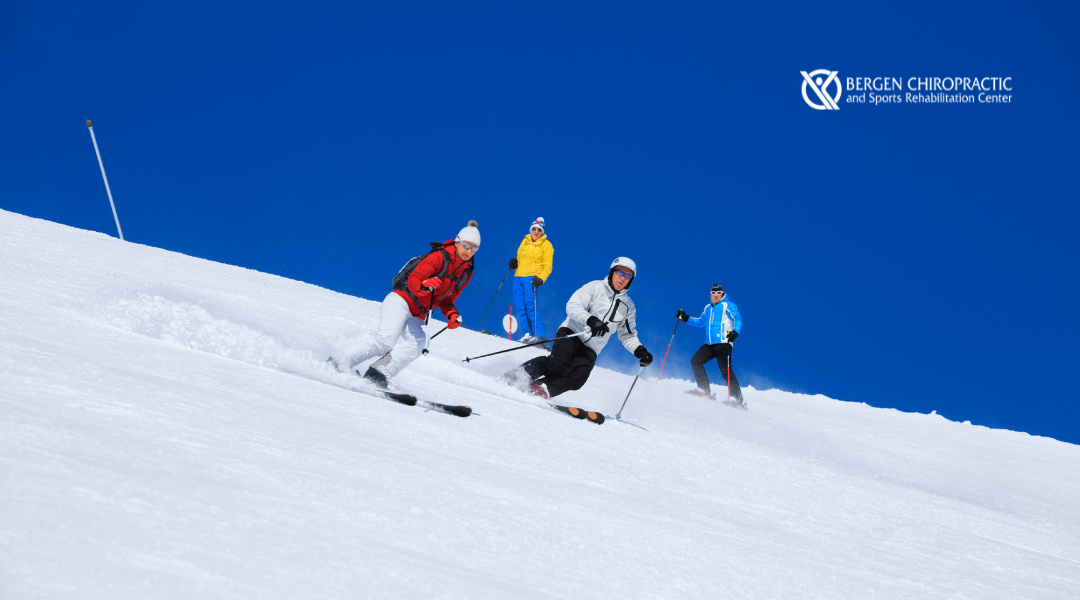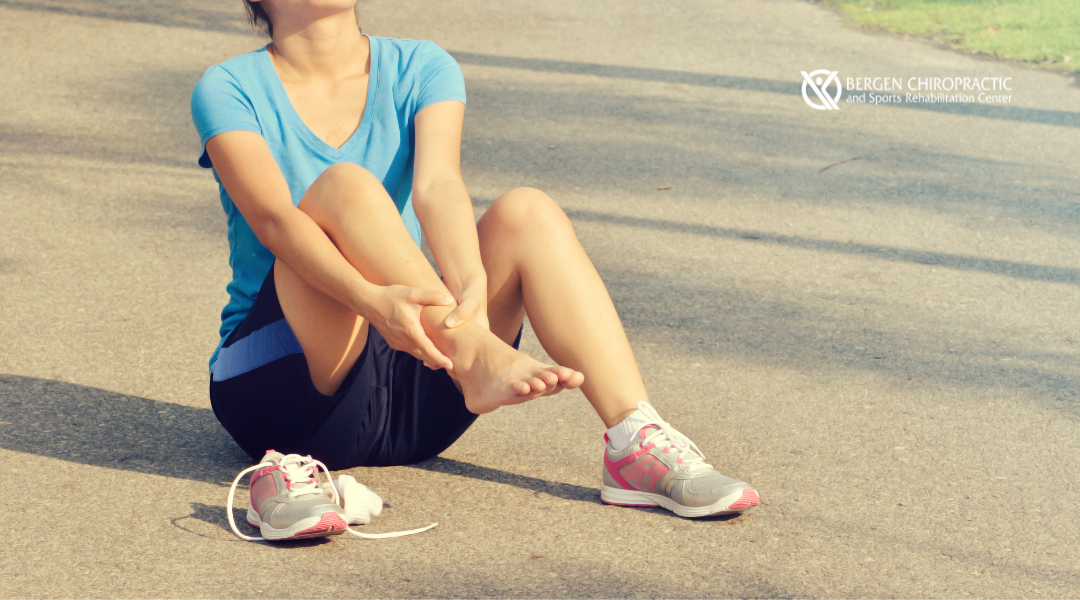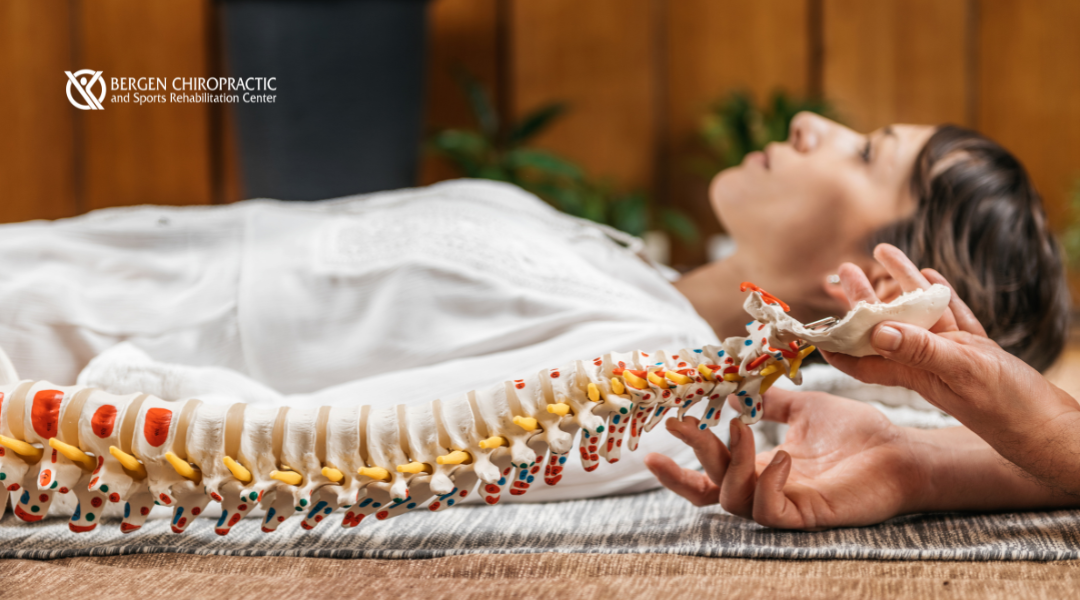Have you ever dealt with the pesky problem of a pulled muscle? It’s a real pain, right? But fear not, because chiropractors are here to save the day!
Chiropractic care is not just about cracking backs – it can also help with pulled muscles, easing your discomfort, providing pain relief, and getting you back on your feet in no time!
And who better to guide you on this journey to recovery than our very own Dr. Greg Doerr from Bergen Chiropractic? He’s got the knowledge, the skills, and the passion to get you back to feeling your best.
So, sit tight and read on to learn how chiropractors can help with pulled muscles and how Dr. Doerr is ready to assist you in your path to recovery!
How Do We Define a Pulled Muscle?
A pulled muscle, also known as a muscle strain, basically occurs when your muscle gets overstretched or torn. It’s like when you stretch a rubber band too far and it snaps — though not quite as dramatic.
You know that feeling when you’re lifting something heavy or running really fast, and suddenly you feel a sharp pain that makes you stop in your tracks? That’s probably a pulled muscle. It happens because your muscle gets overloaded or it’s been used too much without enough rest.
Our muscles are pretty sturdy and can take significant amounts of wear and tear. However, sometimes we push them a bit too hard, and that’s when a muscle strain happens.
If you think you’re dealing with a strained muscle, the best thing to do is rest — no heavy lifting or intense workouts for a while. Apply ice to the affected area to reduce swelling and take over-the-counter pain relievers if it’s really bothering you.
If the muscle pain doesn’t get better after a few days, have it checked out by a doctor. They can make sure it’s nothing more serious and give you advice on how to heal faster.

What is the Root Cause of Pulled Muscles?
Pulled muscles usually occur when you’re asking a bit too much of your body. Imagine you’re lifting something way heavier than you’re used to or you suddenly dash off to catch the bus without warming up. Your muscles are like, “Whoa, what’s happening here?” and they can’t handle the sudden muscle strain, resulting in those little tears in your muscle fibers.
Slacking off on your training and then suddenly you jump back in full force is another recipe for pulled muscles. It’s like showing up for a marathon when you’ve only been training for a 5K. Your muscles need time to adapt to the level of activity you’re asking of them.
Also, let’s not forget about muscle fatigue. If your muscles are tired, they’re less able to properly support and protect your joints, increasing your risk of injury, including muscle strain. So, while it’s awesome to give it your all during a workout, it’s equally important to know when to rest and let your muscles recover.
Finally, the aging process increases your risk of muscle strains. As we age, our muscles lose flexibility and strength, making them more prone to injuries — an integral part of aging. That’s why it’s essential to stay active and keep those muscles strong and flexible, no matter your age.
To sum it up, pulled muscles often come down to a mix of overexertion, insufficient training, muscle fatigue, and sometimes just the natural process of aging. It’s all about listening to your body and not pushing it past its limits.
What are the Muscle Strain Symptoms?
How do you know if you’ve actually pulled a muscle or if you’re just really sore from that killer workout you did? Here’s the lowdown:
- Pain and tenderness. If you’re pulling a muscle, you’ll feel a sharp pain right away. The area might also be tender to the touch. Think of it as your muscle’s SOS signal!
- Limited movement. Having trouble moving that part of your body with a muscle strain? That’s another sign. Your muscle’s not in the mood to work right now, so it might feel stiff or weak.
- Swelling. If the area starts puffing up, it’s probably because of increased blood flow as your body tries to heal the injury. It’s like your body’s own little repair team rushing to the site!
- Bruising. Sometimes, a pulled muscle can cause bruising. This occurs when those tiny blood vessels (capillaries) in your muscle break and leak blood into the area.
- Muscle spasms. Ever had a charley horse? Then you know what a muscle spasm feels like. If you’ve pulled a muscle, you might feel these sudden, involuntary muscle contractions.

Can a Chiropractor Help With Pulled Muscles?
When pulling a muscle, it’s not just the muscle itself that gets affected. The injury can also mess up your body’s alignment and the way you move. This is where chiropractic care comes into play!
Chiropractors are the body’s maintenance experts, keeping all the parts moving smoothly and in sync. If a pulled muscle is throwing you off balance, a chiropractor will help get things back in order. They provide adjustments to realign your spine and joints to reduce pain, relieve stress, and help the pulled muscle heal faster.
But that’s not all! Part of chiropractic treatment involves therapeutic exercises that strengthen the muscles and prevent future injuries. They also offer advice on posture and ergonomics to make sure you’re not putting unnecessary strain on your body during day-to-day activities.
Chiropractors often use techniques like massage or soft tissue therapy on the affected muscle. These techniques improve blood flow to the area, speed up the healing process, and reduce the risk of scar tissue formation.
What works best for you will depend on your medical history, specific injury, and overall health. But in general, chiropractic care will play a great role in your pulled muscle recovery!
How to Prevent Pulled Muscles in the Future
Preventing pulled muscles in the future comes down to taking care of your body. Warm up before you do any intense physical activity, so your muscles are ready to go. Take things slow, gradually increasing the intensity or duration of your workouts — no need to go from zero to sixty overnight!
Stay hydrated and eat a balanced diet to keep your body in tip-top shape. And don’t forget about rest! Giving your body time to recover after a workout is super important to prevent injuries.
Finally, pay attention to your body. If something feels off, take a break. Pushing through the pain isn’t worth pulling a muscle. It’s better to take it easy than to be sidelined with an injury.
Dealing With a Pulled Muscle? Dr. Doerr is Here to Help!
At Bergen Chiropractic and Sports Rehabilitation Center, our chiropractic team, led by Dr. Gregory Doerr, adheres to the highest and most professional medical standards to provide superior chiropractic help. Our mission is to provide unparalleled patient care and services in a comfortable healing atmosphere. Access our contact form or call us at (201) 945-4075 to learn more about our chiropractic treatment services! Our chiropractic offices at 532 Anderson Avenue, Cliffside Park, NJ 07010, and 62 Summit Ave, Hackensack, NJ 07601, are ready to welcome you as we proudly serve New York, New Jersey, Philadelphia, PA, and Baltimore, MD, areas. Also, feel free to access our blog, Facebook, and Instagram pages for more information on chiropractic treatments!
References
- Wan, Jing-Jing, et al. “Muscle Fatigue: General Understanding and Treatment.” Experimental & Molecular Medicine, U.S. National Library of Medicine, 6 Oct. 2017, www.ncbi.nlm.nih.gov/pmc/articles/PMC5668469/. Accessed 11 May 2023.
- Pietrangelo, Ann. “Muscle Strains: Symptoms, Causes, and Prevention.” Healthline, Healthline Media, 20 Apr. 2023, www.healthline.com/health/strains. Accessed 11 May 2023.









